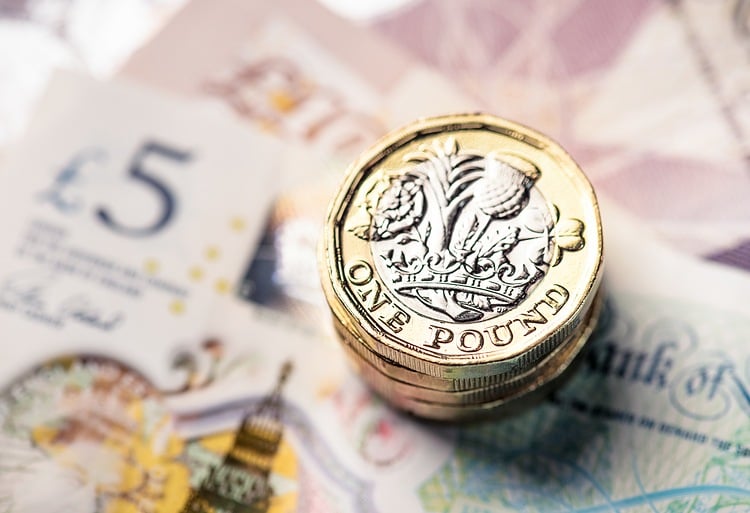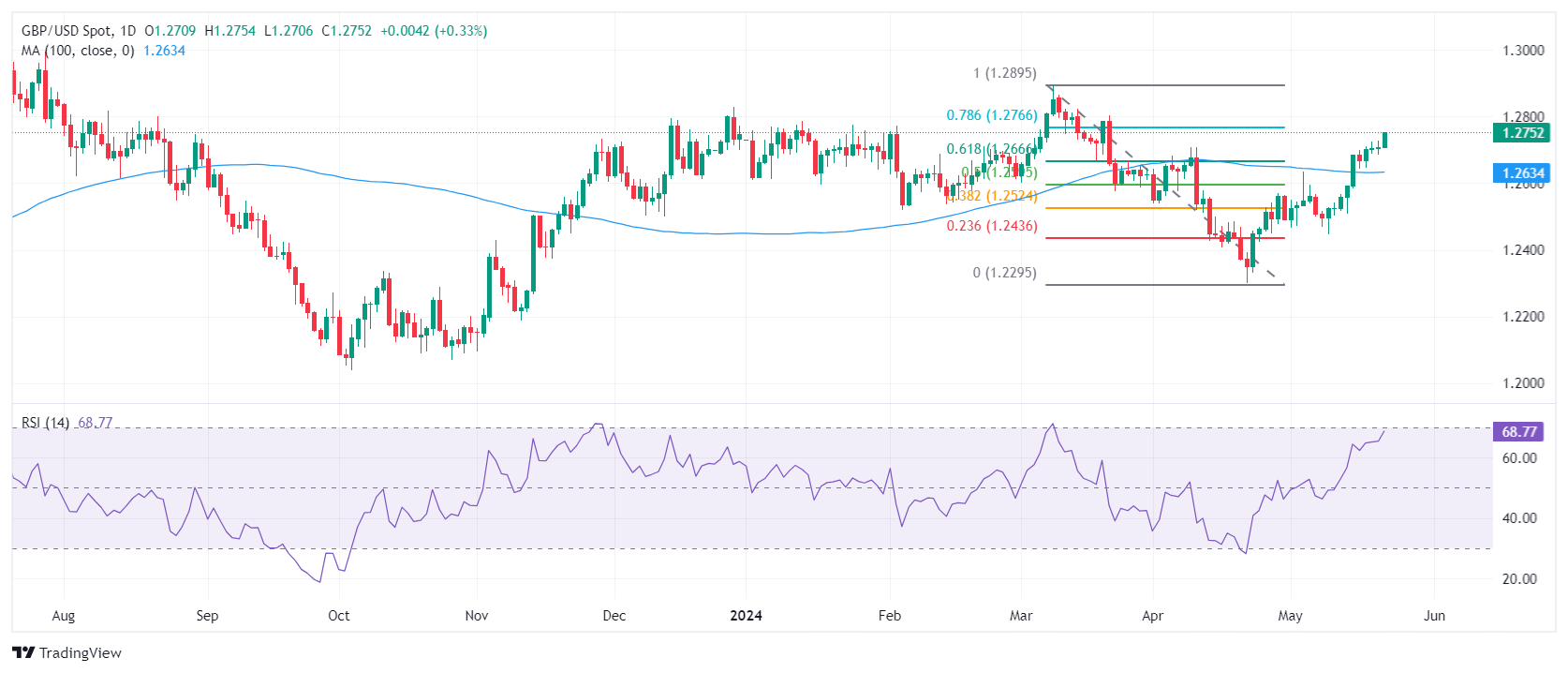- The Pound Sterling jumps to 1.2750 as UK inflation for April remains hotter than expected.
- UK annual core inflation rose by 3.9%, likely impacting BoE rate-cut hopes for August.
- The next move in the US Dollar will be guided by the FOMC minutes.
The Pound Sterling (GBP) rallies to 1.2750 in Wednesday’s European session as the United Kingdom (UK) Office for National Statistics (ONS) has reported a slower-than-expected decline in the Consumer Price Index (CPI) data for April. UK inflationary pressures remained hotter than estimates but have softened significantly from March figures, suggesting that higher interest rates by the Bank of England (BoE) are maintaining downward pressure on inflation.
A slower decline in UK inflation is expected to negatively impact expectations for BoE rate cuts, which financial markets expect the central bank will begin from the August meeting.
The speculation for the BoE to begin reducing borrowing costs in August strengthened after BoE Deputy Governor Ben Broadbent commented on Monday: “If things continue to evolve with its forecasts – forecasts that suggest policy will have to become less restrictive at some point – then it’s possible Bank Rate could be cut sometime over the summer,” Reuters reported.
Daily digest market movers: Pound Sterling moves higher vertically after hot UK CPI report
- The Pound Sterling soars to 1.2750 as the UK ONS has reported a higher-than-expected growth in the consumer price inflation data for April. Headline inflation rose 2.3% year-over-year (YoY), higher than expectations of 2.1% but decreasing from the prior reading of 3.3%. Monthly headline inflation grew by 0.3%, beating the estimate of 0.2% but lowering sharply from March’s reading of 0.6%.
- UK’s annual core CPI data, which strips off volatile items such as food and energy prices, grew by 3.9% (YoY), above the consensus of 3.6% but decelerated from March’s reading of 4.2%. The core inflation data is the Bank of England’s preferred inflation measure for decision-making on interest rates. Though the inflation grew stronger than expectations, it is on course to return to the 2% target.
- On the other side of the Atlantic, uncertainty about when the Federal Reserve (Fed) will start reducing interest rates has deepened. Fed policymakers advised keeping interest rates at their current levels until they get evidence that inflation will sustainably decline to the desired rate of 2%. Though progress in the disinflation process has been restarted after stalling for three straight months at the beginning of the year, Fed policymakers lack confidence that it will last long.
- Like other Fed policymakers, Cleveland Fed Bank President Loretta Mester said on Tuesday that she wants to see inflation declining few more months to be sure that inflation is on course to return to 2% before considering rate cuts.
- The US Dollar (USD) remains in a sideways trend as the Fed’s hawkish stance on interest rates has supported the downside while firm speculation that the central bank will start lowering interest rates from the September meeting has limited the upside. Going forward, investors will focus on the Federal Open Market Committee (FOMC) minutes for the May meeting on Wednesday. The FOMC minutes will provide more guidance on the interest rate outlook.
Technical Analysis: Pound Sterling recaptures two-month high at 1.2750
The Pound Sterling approaches a nine-month high at around 1.2900 registered in early March. The appeal for the GBP/USD pair has strengthened as it has comfortably stabilized above the 61.8% Fibonacci retracement (plotted from the March 8 high of 1.2900 to the April 22 low at 1.2300) at 1.2667.
The Cable is expected to remain in the bullish trajectory as all short-to-long-term Exponential Moving Averages (EMAs) are sloping higher, suggesting a strong uptrend.
The 14-period Relative Strength Index (RSI) has shifted into the bullish range of 60.00-80.00, suggesting that the momentum has leaned toward the upside.
Pound Sterling FAQs
The Pound Sterling (GBP) is the oldest currency in the world (886 AD) and the official currency of the United Kingdom. It is the fourth most traded unit for foreign exchange (FX) in the world, accounting for 12% of all transactions, averaging $630 billion a day, according to 2022 data. Its key trading pairs are GBP/USD, aka ‘Cable’, which accounts for 11% of FX, GBP/JPY, or the ‘Dragon’ as it is known by traders (3%), and EUR/GBP (2%). The Pound Sterling is issued by the Bank of England (BoE).
The single most important factor influencing the value of the Pound Sterling is monetary policy decided by the Bank of England. The BoE bases its decisions on whether it has achieved its primary goal of “price stability” – a steady inflation rate of around 2%. Its primary tool for achieving this is the adjustment of interest rates. When inflation is too high, the BoE will try to rein it in by raising interest rates, making it more expensive for people and businesses to access credit. This is generally positive for GBP, as higher interest rates make the UK a more attractive place for global investors to park their money. When inflation falls too low it is a sign economic growth is slowing. In this scenario, the BoE will consider lowering interest rates to cheapen credit so businesses will borrow more to invest in growth-generating projects.
Data releases gauge the health of the economy and can impact the value of the Pound Sterling. Indicators such as GDP, Manufacturing and Services PMIs, and employment can all influence the direction of the GBP. A strong economy is good for Sterling. Not only does it attract more foreign investment but it may encourage the BoE to put up interest rates, which will directly strengthen GBP. Otherwise, if economic data is weak, the Pound Sterling is likely to fall.
Another significant data release for the Pound Sterling is the Trade Balance. This indicator measures the difference between what a country earns from its exports and what it spends on imports over a given period. If a country produces highly sought-after exports, its currency will benefit purely from the extra demand created from foreign buyers seeking to purchase these goods. Therefore, a positive net Trade Balance strengthens a currency and vice versa for a negative balance.

